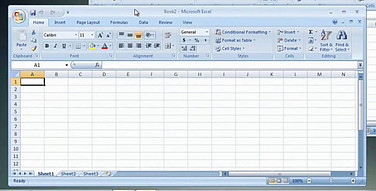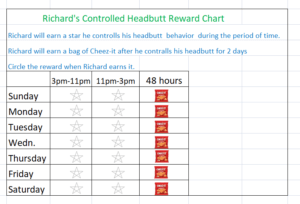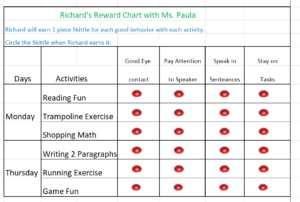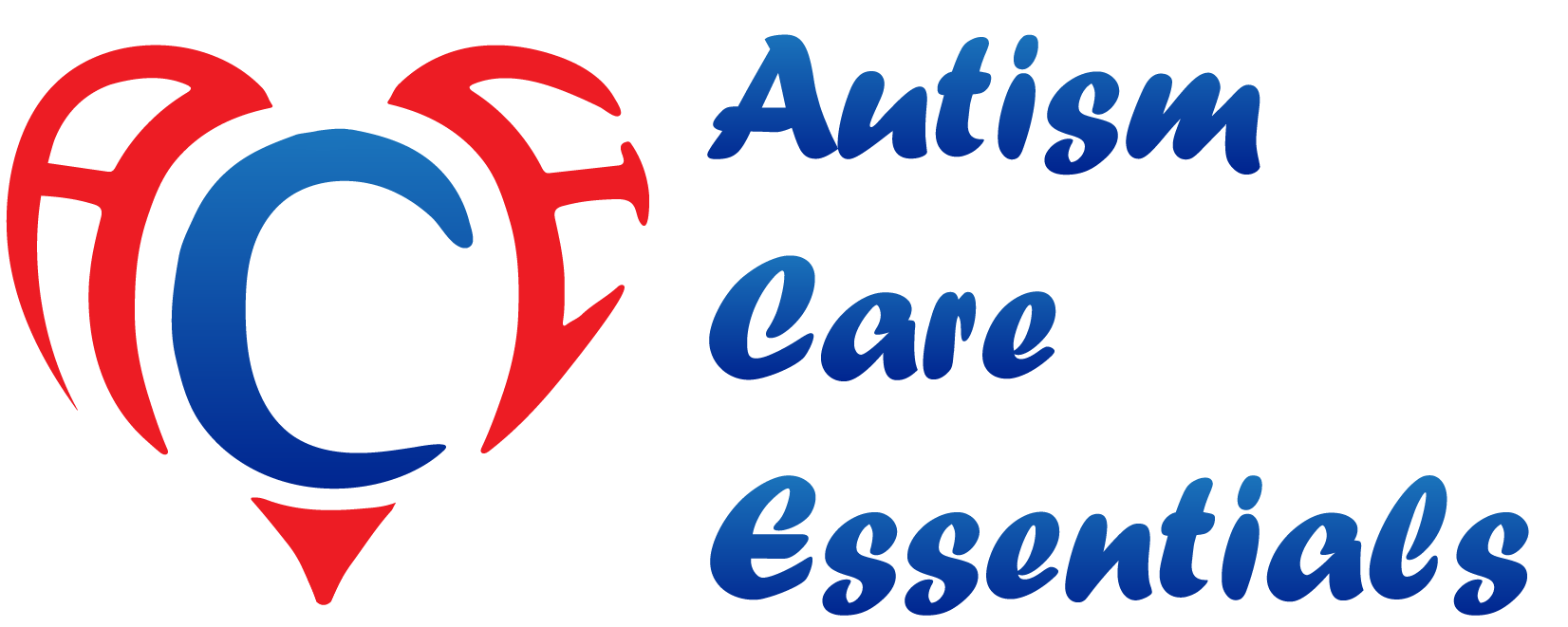Autism is a wide-ranged developmental disorder with the deficits of language and communication social skills as its core symptoms. Behavior chart is a table of information that contains a list of the desired conducts or manners from a child. It often includes time, day and name of the rewarding items. But how these two can be connected together logically?
What is Autism Behavior Chart
Autism behavior chart is a chart for autisic children. It is a table of information that indicates the desired behaviors or skills expected from an autistic child to achieve at certain settings. It also includes how the child is rewarded upon achieving the desired conducts or manners. The goal of autism behavior chart is to improve the learning and living skills of autistic children.
The behavior chart for autistic children usually prioritizes in improving the behaviors or skills that are related to their needs of language and social communication. Unlike behavior chart for neuro-typical children, autism behavior chart usually lists eye contact, good eye contact or speaking with eye contact as part of the chart, depending on the stage of the need. As part of their core training, autism behavior chart also lists the goals for the needs of using words or speaking in sentences at certain point of time.
While people have mixed opinions on how behavior chart can motivate effectively on autistic children, they probably have their legit reasons for what they believe. Our question becomes:
Does Behavior Chart Work
While there is no simple answer to the question if behavior chart works, I would say that behavior chart can be a great tool for autistic children if it is designed appropriately.
When designing a behavior chart for an autistic child, below are the factors to be considered.
- Understanding-This is an essential element when planning the chart. The cognitive ability of the child dictates what kinds of chart if even possible to have it to start with an autistic child.
- Reward-A behavior chart for an autistic child can be also called autism reward chart. A chart should indicate what rewards they can earn when they conduct in a desired direction. The reward for the chart has to be the most desirable items for the child. This plays a huge role for the success or failure of the chart.
- Behavior-What behaviors need to improve most? You might be able to list 20 behaviors or more need to improve. It is almost impossible to work on 20 behaviors at once.
- Difficulty-How difficult to improve those behaviors? Depending on the child, certain behaviors are easier to fix than others. It is another key factor for failure or success whether the goals are not attainable or not.
- Duration-How long does the child need to wait for the evaluation of the reward? Most autistic children react better with small instant rewards than a delayed reward, even though the delayed reward can be much bigger than the instant rewards combined. It requires developmental maturity to understand the benefits of bigger delayed reward.
- Consistency-Will the child have the consistency to work on the chart every day with the same/or similar schedule?
- Patience-Do you have the patience to stick to the chart for as long as it needs? A chart can’t do magic trick to improve a behavior or a skill within days. Even with an “easier-fix” behavior, it can take weeks to months to conclude the outcome.
A chart most likely works well if it is designed according to these seven elements with good measurements from the child and the executor. Check off these factors when designing a chart for school or for home.
How to Make the Chart at Home
Based on the above elements, we break down to three parts of action when making the chart at home.
Know Your Autistic Child
- Is your child is developmentally ready to understand a chart? They don’t have to comprehend a complicated chart yet, but at least they are able to look at a simple chart with the understanding what is demanded from them and what they can earn.
- Start with a behavior that needs to be fixed most urgently. If the child has biting, hitting or wandering behavior, you want to fix those behaviors before they get worse.
- Use child’s most favorite snack as a reward if possible. Edible items are the most desirable reward among most autistic children. Keep that snack as the reward only for this chart that the child can only earn the reward through it. If the child can have the reward from somewhere else easily, they won’t try hard to earn the rewards through the chart.
- If the child is ready to start with a few behaviors at once, try not to list irrelevant behaviors on the same chart. If you list clean room, speak in sentences, nice table manner on the same chart, it is hard for the child to understand the purpose of the chart.
How You Approach the Chart
- Breaking down the “big” behaviors to small steps or setting up different levels to get closer to the desired behavior as the level of difficulty increases. If you are working on nice table manner, you will start with fisrt 5 goals of(if applicable): wash hands before eating, sit up straight, feet on the floor, head over the plate, and don’t play with the food. After they build habit for those behaviors, you will change the chart to: chew with mouth closed, clear the plate, put the plate to the sink, say please and say thank you.
- If the child is not ready for a delayed reward, a behavior chart longer than daily reward will not work or not as effective at the best. Let’s look into the nice table manner chart. It works better if the child is rewarded for good manner on the target goals after each meal in the beginning. Once the child is consistent with first 5 goals after each meal for a week or two, then delay reward to every day. Then to 2 days and finally to every week. After the child is consistent with first 5 goals every week, they can move on to next 5 goals. Repeat the same way as for the first 5 goals.
- Don’t start a chart a few days before vacation if you can’t expect to follow through during the vacation.
- Are you ready to test your own patience? As you can see from the nice table manner chart, it will take about 3-6 months consistent use of the chart to really see the 10 goals to become habits. Once the child know what the nice table manner requires, you can add “nice table manner” as one goal in home routine behavior chart as maintenance. You will apply the same method to every goal from bed time routine to help the chores in the house.
Making the Chart
Through my own experience, printed charts work best. While the store-bought magnet charts or chart app provide certain convenience to your life, they have too much disadvantage for autistic children. So get yourself ready for the fun of making your own.
- You don’t really need chart creator app for the task, but you will find it much easier if you can use Word or Excel. If not, a piece of paper, a pen and a ruler.
- Type, write or draw one to five goals for the behaviors on the chart.
- Write or draw about the reward or rewards.
- Mark the day, time to earn reward if needed.
Autism Behavior Chart Examples
As we know that we can make a chart for a single behavior or for multiple related behaviors, we will use the following 3 charts to demonstrate how the charts can be created.
I am using Richard’s head-butt behavior on this single behavior chart while indicating Richard’s favorite snack Cheez-it as a reward visually. Depending on the frequency of the behavior, you can design the time frame for the controlled behavior in an hour, 3 hours, 5 hours or 10 hours. The goal is to have the controlled behavior for 24 hours in the beginning.
Once Richard head-butts less than once a day, you can revise the chart to:
You can work on 3 days to a week behavior controlled accordingly once the behavior is controlled within 2 days.Once the child can control the behavior for a week consistently for 4 weeks,you can move it to the same chart with other behaviors for monthly maintenance.
A well-designed chart not only can improve child’s behaviors, but also helps the productivity from a home therapist.You can see it in the following Richard’s reward chart with a home therapist. In this chart, I am using Richard’s another favorite snack-Skittles as reward.
From my personal experiences and perspectives, the autism behavior chart can make huge impacts on the behavior improvement and skill development for autistic children. But it requires tremendous effort including planning the chart according to the child’s need and interest, using the specific chart consistently and changing the behavior to different chart for maintenance for a period of time to become a permanent habit. Once you do all this, you are one step closer to the ultimate goal of autism behavior chart which is to improve behaviors and skills of an autistic child and to help them live the life without the chart eventurally.
Free Printable Autism Behavior Charts
With all the behaviors from my autistic twin sons, I understand how stressful that certain autism behaviors can cause.
I wished there was printable autism behavior charts for my sons ten years ago.
The only choice I had was to create my own charts to help treat my twins’ problematic behaviors. The list of the behaviors is still overwelming to think back. Compared to running away behavior, other behaviors like head-butt, self-hitting, destruction behavior of drawing all over the walls, Pica behavior of eating Playdoh, even compulsive behavior of calling 911 are much less stressful.
It took us more than 2 years to work on the running-away behavior intensely with the chart for one twin. In the end, it was worth every minute of our time. In last six years, he only walked to the car twice alone when we were saying goodbye to our party. While we let him know that his behavior was scary, we didn’t think he was running away from us. And I don’t take it for granted from the nights of good sleep not to worry that the door to the garage is not locked. The piece of mind knowing that he can wait for bus on our driveway in school days brings the extra joy that I couldn’t imagine 8 years ago.
Every other behavior was a more or less challenge. But with a persistence of treating them one at a time, we are pleased to say that all our worries related to those behaviors are behind us.
We are now seeing good results from the charts to improve their learning and social skills from pay attention to speaker to stay on task both at home and in school.
I wouldn’t say it is an easy task to use behavior chart to see the positive results. But with urgency and determination, the behavior chart can be a great tool to help the child improve. I can’t emphasize enough how important the consistency and persistency are to see best results from the chart.
Every autism behavior chart shoud be as unique as the autistic child.I have learned and created the charts for my sons that can address the behaviors effectively. You can do that too. Study the elements and follow the steps, you will learn to create the charts for your child in meaningful ways. Just stay flexible to fix the chart when it seems too difficult or not motivating. Make sure the reward rules are strickly followed.
But if you still need help to create the chart for your child, don’t hesitate to reach out. Indicate your child’s age, behaviors that need to be improved(It is better if you can discribe the severity of the behaviors) and your child’s most favorite snacks in the comment below. A personalized free printable autsim behavior chart will be waiting for you in your mailbox!
